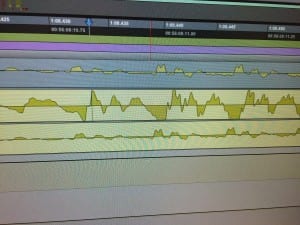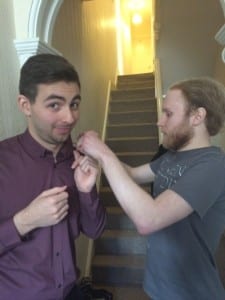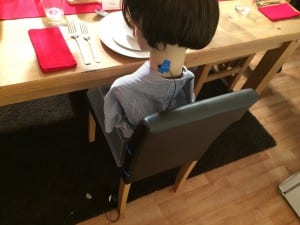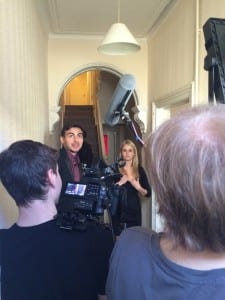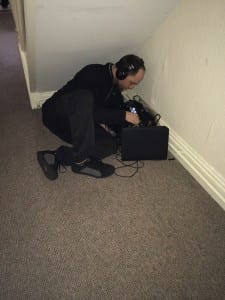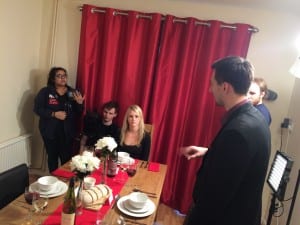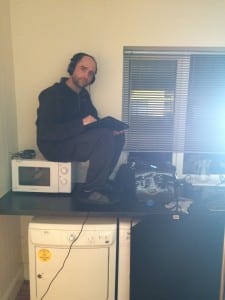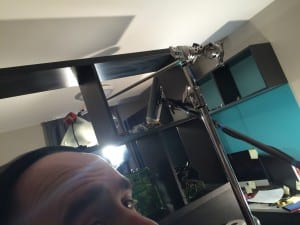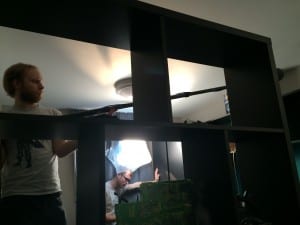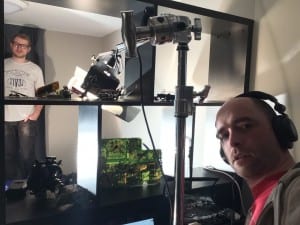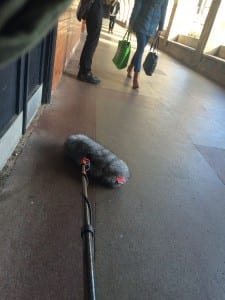(Outcomes – PER1, 2, 4, GR1)
As part of this final term project I decided to fix a set of rates for work which I intend to use as guidance for my actual rate-card post-university. This also enabled me to convert the work I carried out on the project this semester into an approximate monetary figure.
I asked Grant Bridgeman for a copy of his rate-card to use as a basis for this though as a multi-award winning location recordist and post-sound bod, Grant is already well established and hence so my own rates would be relatively low. I’m also going to dispense with equipment hire costs etc (though these are furnished in detail on Grant’s rate card) for the purposes of this calculation, since I’m interested in the labour aspect of the equation here, really, and am considering the situation as though I am charging the time back to a central body (so, if Omni-Gaffer were a limited company, for example). [PER2]
Grant’s rates are in line with BECTU’s, the entertainment sectors trade union, which I have also studied and as such I’ve pitched at slightly above the trainee rate therein:
Daily Rate
Sound Recordist rate is £150 per day, up to 10 hours, additional hours charged at £25 per hour or part thereof.
Weekly On Set Rate
5 Day Week, 10 Hour Day – £750
Post Production Rates
Daily Rate, 10 Hour day (inc studio) £150
Hourly Rates (inc studio) £15 per hour
Post production rates here are the rates a studio I work for charges for recording and producing bands at present.
Next to convert the Omni-Gaffer project into monetary terms using these rates, we first need to know what amount of time the project consumed and how many of these hours are realistically chargable. I’m thinking of myself as invoicing a central body (like a limited company) for my time here, in reality any financial rewards for a project like this in the real world would be split up according to the OG Audio agreement.
My calculations since February 1st of the hours I invested in this project are below:
Total Hours Worked – 244
Total Admin / Meets – 67
Total Creative – 123
Total Location – 52
Total Other – 2 [PER4]
Only location and creative work (which encompasses everything taking place in the studio for post work, essentially) are directly chargeable, as admin and ancillary work would be expected to be built into the hourly charges for the services. As such, we can break down the chargeable costs as follows –
1 x 5 day week of 10 hour days on-set = £750
2 x additional hours on set at £25p/h = £50
12 x 10 hour days of studio time = £1800
3 x additional studio hours @ £15 = £45
This would bring my invoice total at the rates above to £2645 which can be divided by the creative and location hours (123+52=175) to give the hourly figure of £15.10p/h, as per the rate care. However, when divided by the actual number of hours the project has consumed (including the administrative time etc), this equates to £10.84p/h. This would also be subject to income taxes etc, depending how my personal business was set up.
In reflection on these figures, it is easy to demonstrate that administrative tasks eat away at profit in an enterprise such as this which begs the question – did the increase in organisation and administration justify working collectively in this way? If we assume that the income from the five projects would be enough to cover this invoicing-for-hours-worked approach for a moment, the boon becomes the fact that working with my colleagues in this way has enabled us to complete multiple projects at all (I could not physically have invested more time in this project during the period) which in effect multiplies the income potential in return for a relatively modest increase in administrative and organisational time. [PER1]
——————————————————
KEY POINTS –
Researching industry rates of pay – Research
- [PER2] To develop a better understanding of the wording and content of contracts, rates and rate cards offered in the film audio field.
Exposition on hours worked – Contribution
- [PER4] To contribute extensively to multiple film productions.
Interpretation of contribution through hourly rate and reflection on interaction with group collaboration – Individual reflection on learning and team role.
- [PER1] To develop a better understanding of the pros and cons of business structures, processes, regulations and agreements which might enable film audio producers to collaborate on multiple projects.
- [GR1] To professionally operate as a small to medium size company (or other recognisable business entity) in the audio production / post-production field might.
